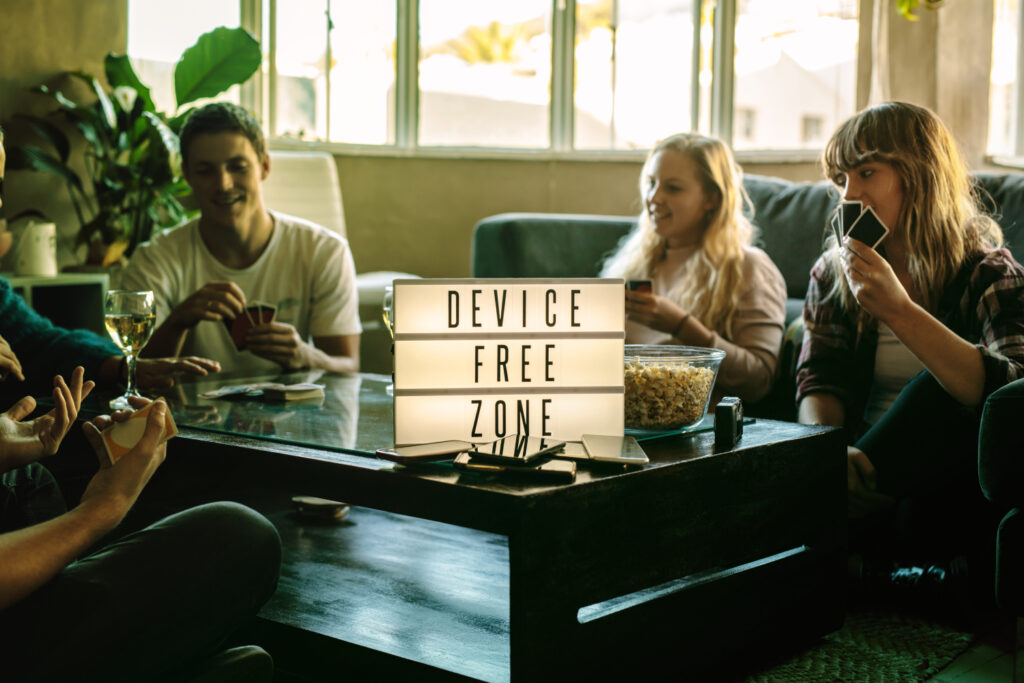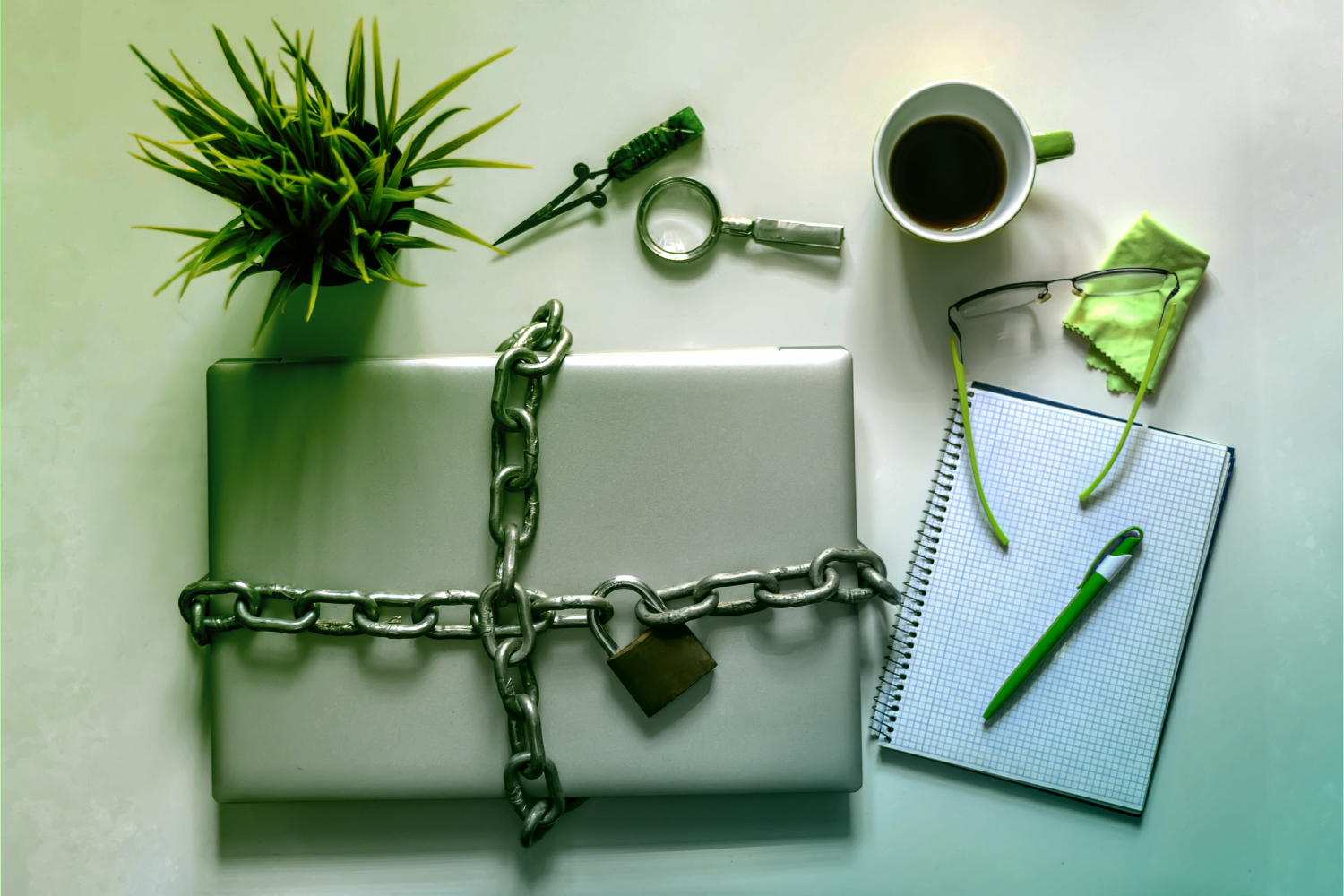As much as we all love our devices, we also know that spending our lives constantly “plugged in” isn’t always a good idea.
Psychological research indicates that the always-on environment we live in is disruptive to our happiness.
Overuse of technology, particularly in connection with social media, leads to increased risk of anxiety, depression, and stress.
Sometimes, no matter how hard it is, the best thing you can do is just switch off your notifications – or switch off from your digital devices completely.
If you’re thinking of taking on a digital detox challenge soon, then you’re in the right place.
Today, we’re going to introduce you to the benefits of a technology detox.
We’ll also be covering tips on how to disconnect from the digital world, and what you can accomplish when you say no to electronics.

Why is a digital detox a good idea?
Succeeding at a digital detox challenge isn’t always easy. While turning your phone off for a few days might seem simple enough at first, it’s often much harder than you’d think.
It’s easy to underestimate how much you rely on your digital devices for communication, work, and play.
The good news? If you can get by with no electronics for just a little while, the outcomes could be incredible. Unplugging from the virtual world gives you more scope to pay attention to the real world and what’s going on around you.
Many people find that a digital detox helps them to reconnect with their loved ones and rediscover the simple things in life.
The sad truth is that adults in the US and other digitally-enhanced parts of the world spend most of their waking hours glued to screens. Nielsen studies from 2018 found that we spend around 11 hours a day interacting with digital media.
These days, it’s hard to find even a few minutes each day when you’re not using some kind of digital device.
Deciding to take on a digital detox challenge doesn’t mean you have to give up on tech entirely. Instead, it’s about being aware of how much of your life you actually dedicate to this environment.
For some people, the problem is so significant that they’re even classified as “addicted” to their devices. Technology addiction isn’t in the DSM-5 yet, but it may get there in the future.
Signs you need a technology detox
So, how do you tell the difference between a tech-savvy individual, and someone who just can’t switch off? If your smartphone, laptop, or tablet seems to be a constant cause of stress, that could be an important first sign.
According to the Stress in America survey, around a fifth of US adults say that technology is a significant source of stress in their life.
Research in Sweden further indicates that heavy use of technology among young adults links to depression symptoms, increased feelings of stress, and sleeping problems.
Here are some signs that you might need to commit to no electronics for a while:
You can’t sleep
Evidence frequently shows that digital devices have a negative impact on our sleeping patterns. This is a common concern because smartphones and laptops often emit blue light that disrupts our melatonin and circadian rhythm.
One study into smartphones, social media use, and mental health also revealed that checking social media accounts in bed increased participants’ risk of anxiety, insomnia, and more disturbed sleep.
Your mental health is suffering
As mentioned above, heavy use of devices links to significant mental health problems. Research tells us that heavy daily technology use in children and adolescents may lead to an increased risk of mental health problems.
More time spent on digital devices apparently increases symptoms of ADHD and self-regulation issues.
Your work/life balance is struggling
Digital devices aren’t just a way for us to stay connected to social media, they can help with work and career tasks too. However, access to things like instant messaging tools for work can make it harder to disconnect from the office.
If you’re struggling to find the line between your work and home life, then you could be in need of a digital detox.
How to disconnect the right way: Digital detox tips
Digital devices are great, but they have their problems too. If you’re constantly comparing yourself to what you see on social media, it’s hard to be content with your own life.
If you’re staring at your screen instead of sleeping, your mental health will suffer. Even using your device too much for work can be bad for your wellness.
So, how do you successfully overcome a digital detox challenge? Some people would argue that you need some sort of retreat that allows you to completely disconnect.
Going to spend some time in the woods with no electronics might work well for some – but that’s not going to be a realistic option for everyone.
Here are some tips to help you detox the right way…
1. Be realistic
First, be honest about what you can reasonably accomplish. If you’re a professional who spends all your time with computers, and you can’t take some time away from work right now, then you can’t do a full technology detox.
Instead, you’ll need to look at how you can cut down your use of devices.
One option might be to start by doing mini detoxes at the end of every workday. Pick a time where you’ll feel comfortable switching off all your digital devices.
Give yourself an hour or two without them while you cook, chat with your family, or engage in a fun hobby, then turn everything back off when you need to.
2. Set limits
There’s no one-size-fits-all for the ultimate digital detox challenge. If you can’t completely disconnect and make sure you’re interacting with no electronics, you might decide to set limits on what you do use.
For instance, you might decide that you can use your phone during your workouts to play music, but you’ll put it on airplane mode, so you’re not distracted by calls, social media, or texts.
Restricting your mobile device usage immediately before you go to sleep could be handy too. If you want to cut down on the amount you use your smartphone, consider leaving it to charge outside of your bedroom when you go to bed.
You can always use a traditional alarm to ensure you’re up in time for work. This way, you’ll be less tempted to stay up late on social media.
When you feel particularly confident with your technology detox, try limiting your media use on personal devices to around 30 minutes a day. Research finds that reducing to 30 minutes or less can improve symptoms of depression.

3. Reduce triggers
A digital detox challenge can be tough enough without endless triggers pulling you back to your devices. Once you decide that you’re going to take a break from electronics, avoid leaving anything running that could pull you back in.
For instance, turn off your notifications and make sure that you don’t have any alerts on your phone to grab your attention.
Crucially, if you’re planning on spending some quality time with someone you care about when you’re amid your technology detox, don’t just turn your sound off.
Studies show that the mere presence of a mobile device when you’re with another person can reduce empathy levels and decrease the quality of a conversation.
Making a digital detox work for you
A digital detox can be anything you want it to be and take on many forms. Some people want to give up all of their digital devices at once, including televisions and smartphones.
Other people only cut down on one device at a time so that they can control their exposure a little better.
If a full digital detox isn’t suitable for you, you might decide to do a digital fast instead, where you give up your devices for a short period each day. Alternatively, pick a day of the week to go device-free, and stick to it every week.
When you’re investing in your digital detox challenge, remember that some things will make this process a little easier for you. For example, letting your friends and family know what’s going on gives you access to extra support.
You might also want to delete social media apps from your phone or place them in a folder, so they’re not as tempting.
To get the most out of your technology detox, keep a journal, and make notes of what you notice along the way. Though you might feel a little uncomfortable at times, the benefits definitely outweigh the negatives.
ReWired: ReThink Your Life.




